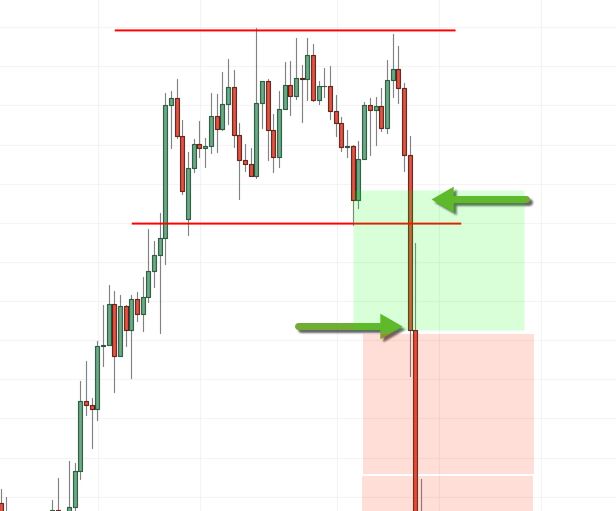Breakout trading is an exciting and lucrative approach in the financial markets, offering traders the chance to capitalize on significant price movements. Whether you’re dealing with stocks, forex, or cryptocurrency, mastering breakout strategies can pave the way for consistent profits. To succeed, it’s crucial to identify breakouts accurately, confirm their validity, and execute trades with well-structured plans. Let’s explore the essential strategies for profiting from breakouts.
What is a Breakout in Trading?
A breakout occurs when the price of an asset moves beyond a previously established support or resistance level, often accompanied by increased trading volume. Support refers to a price level where the asset tends to find buyers, preventing further decline, while resistance is a level where selling pressure limits price increases.
For example, if a stock struggles to rise above $100 multiple times, that level becomes its resistance. When it breaks through $100 on high trading volume, a breakout is confirmed, signaling potential further gains or a new trend direction.
Why Breakouts Are Crucial for Traders
Breakouts are significant because they often mark the start of new trends, providing opportunities for traders to profit early. However, not every breakout leads to a prolonged trend, as some may reverse unexpectedly. Some may reverse quickly, leading to losses—these are called false breakouts. Recognizing true breakouts and minimizing risks is critical to success.

Key Tools to Identify Breakouts
1. Trendlines and Patterns
Chart patterns like triangles, rectangles, and flags can signal potential breakouts. Plotting trend lines enables traders to identify essential levels of support and resistance with precision.
2. Trading Volume Analysis
Volume is a strong indicator of breakout validity. Genuine breakouts usually occur with increased trading volume, reflecting strong market interest.
3. Moving Averages
Simple and exponential moving averages can act as dynamic levels of support or resistance. A price crossing above or below a moving average may signal a breakout.
4. Technical Indicators
Indicators like Bollinger Bands or the Relative Strength Index (RSI) provide valuable insights into market conditions, helping confirm potential breakouts.
How to Trade Breakouts Like a Pro
1. Identify Clear Levels
Spot significant support and resistance levels on a chart. These levels should have been tested several times, establishing their reliability.
2. Wait for a Confirmed Breakout
Jumping in too early can be costly. Wait for the price to break beyond the key level with a strong candlestick close and an increase in volume.
3. Define Your Entry and Exit Points
Plan your entry slightly beyond the breakout level to avoid premature trades. Set stop-loss orders to protect against false breakouts and determine take-profit levels based on the asset’s potential movement.
4. Monitor Momentum
Indicators like the Moving Average Convergence Divergence (MACD) or RSI can help assess whether the trend is strong enough to sustain the breakout.
5. Lock in Gains
As the trade moves in your favor, consider scaling out or adjusting stop-loss levels to secure profits while letting the trade run.

Popular Breakout Trading Strategies
1. Breakout with Retest
Instead of entering immediately after a breakout, some traders wait for the price to return to the breakout level (retest) before entering. This strategy can help confirm the breakout’s strength.
2. Range Breakouts
When an asset trades within a tight range for a prolonged period, a breakout from this range can lead to explosive price movements.
3. Continuation Breakouts
In strong trends, prices may consolidate briefly before resuming their original direction. Identifying continuation patterns like flags or pennants can be highly profitable.
4. Intraday Breakouts
For day traders, breakout opportunities in shorter time frames can be lucrative but require quick decision-making and strict risk management.
Managing Risks in Breakout Trading
Breakout trading is inherently risky due to the possibility of false breakouts. Employ these strategies to reduce risks:
Use Stop-Loss Orders: Place stop-loss levels just below support or above resistance to limit potential losses.
Position Sizing: Proper position sizing is critical—ensure you risk only a small fraction of your trading account on any single trade.
Diversify: Avoid relying solely on one breakout by spreading trades across multiple assets.
Stay Updated: News events or market announcements can heavily influence breakout outcomes.
The Psychology Behind Breakout Trading
Trading breakouts involve more than just technical analysis—it requires emotional discipline. Traders often face FOMO (fear of missing out) and may rush into trades without proper confirmation. Remaining committed to your trading plan and avoiding emotionally driven decisions is essential for sustained success.
Final Thoughts
Breakout trading offers immense potential for profits, but success hinges on preparation, patience, and risk management. By identifying clear levels, confirming breakouts with volume and momentum, and managing trades effectively, you can enhance your chances of capturing significant price movements. Remember, trading is a marathon, not a sprint—stay disciplined and consistent to reap the rewards of breakout trading.
